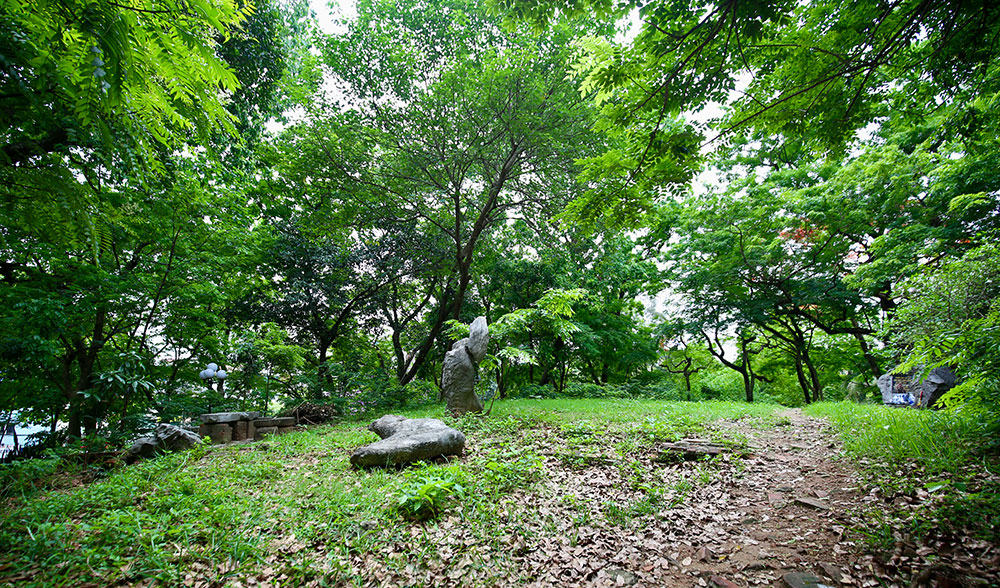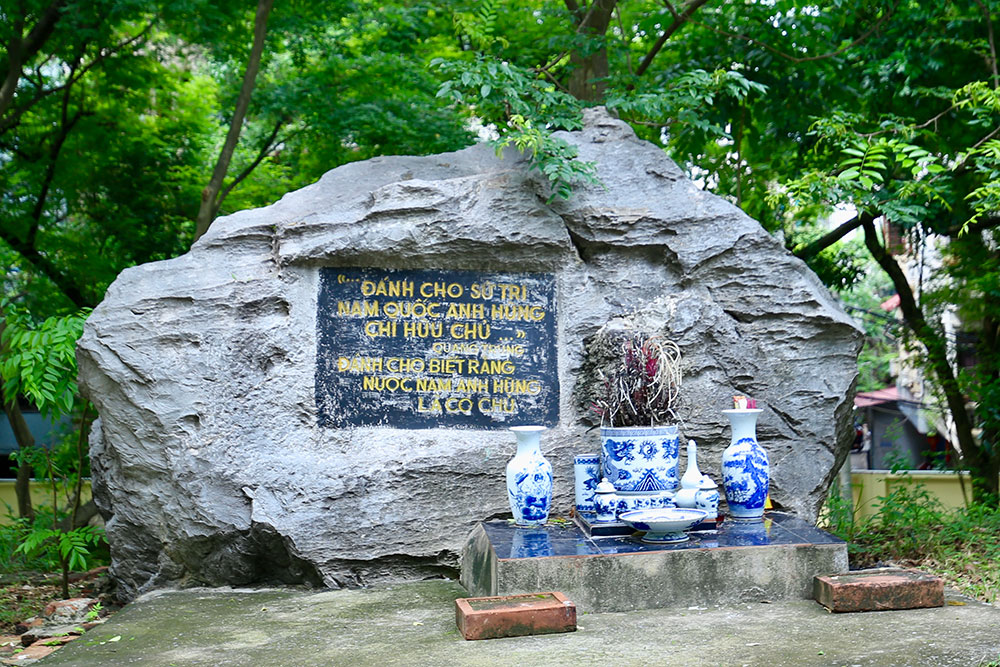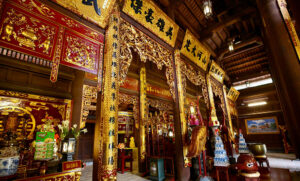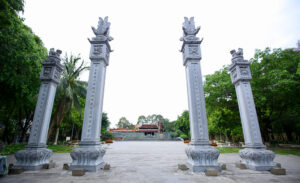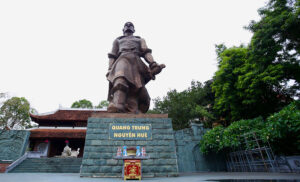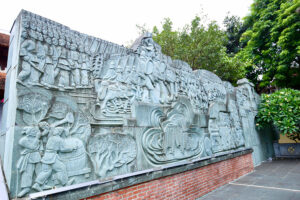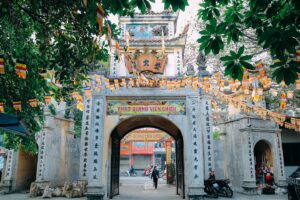Dong Da Mound
Dong Da Mound was originally one of the mounds in Dong Da land. Over the years, on those mounds, trees have grown luxuriantly, mostly banyan trees, so people often call those mounds Dong Da mounds. The place with those mounds is called Dong Da land.
After the battle on the 5th day of the Year of the Rooster (1789), in the Dong Da area, dead enemy bodies were scattered everywhere, from Nam Dong, Khuong Thuong village to Thinh Quang village. Emperor Quang Trung commanded the collection and burial of the corpses in 12 holes and had them piled high into mounds. In 1851, due to the way paving and the market construction, people discovered many enemy remains, so they collected them and buried them in a large hole, next to Oc Mountain (also known as Loa Son), then built up a high land adjacent to the old mountain and also called Dong Da Mound. Later, when expanding Hanoi city, the French colonialists removed 12 mounds, leaving only the mound at Oc Mountain. Therefore, Dong Da Mound is now the 13th remaining mound, also known as “Kinh Nghe Quan” (i.e. the mound where the corpses of fierce enemies such as Kinh fish and Nghe fish are buried in the sea). This event was recorded in the poem “Loa Son Dieu Co” (Visiting Oc Mountain) by contemporary poet Ngo Ngoc Du who wrote:
Thành Nam thập nhị Kình Nghê quán
Chiếu điện anh hùng đại võ công
Roughly translated:
Twelve mounds of corpses south of the citadel,
Highlighting heroic deeds with great martial achievements.
In the 19th century, Chinese strategist Hoang Cao Khai, due to his merits in suppressing the uprisings of patriotic scholars, was awarded Thai Ha hamlet by the French colonialists. He demolished the Sam Nghi Dong temple and moved the Trung Liet temple (which was built in the 6th year of Chinh Hoa (1685) from Van Tan village (next to the Temple of Literature) to Dong Da mound. In the temple, the gods were worshiped, along with loyal mandarins and national heroes such as Le Lai, Governor of Hanoi Citadel Nguyen Tri Phuong, Nguyen Lam, Governor Hoang Dieu, Truong Quoc Dung, Doan Tho, Nguyen Cao, and Truong Dang Que. Since 1946, the temple has also worshiped Emperor Quang Trung. However, currently, the temple no longer exists, only the temple gate remains, bearing the mark of the Nguyen Dynasty. The gate was built in the style of a city gate, including a 3-story gazebo to observe the surroundings. The top floor has four curved roofs and two dragons at both ends of the roof. In the middle are bars to create ventilation and function as a lookout. The bottom floor is located halfway up the hill and includes an arched main walkway, above which are three large letters “Trung Liet Mieu” (Trung Liet Temple), and on both sides are couplets in Chinese characters:
Thử thành quách, thử giang san, bách chiến phong trần dư xích địa
Vị nhật tinh, vị hà nhạc, thập niên tâm sự cộng thanh thiên
Roughly translated:
Those citadels, those mountains and rivers, a hundred battles of hardship endured in every inch of land
For heaven and earth, for rivers and mountains, ten years of yearning known only to the blue sky.
The mound is a prominent item in the space of this relic. From the temple gate, one steps up the gradually higher steps to reach the top of the mound. The mound has a fairly large area, surrounded by a three-layer high curb of green stone, the body and top of the mound are interwoven with ancient trees and perennials. This is the original feature and holds special value for this relic. The back of the mound is also lined with stone steps leading upward, forming a “chi” style walkway. In particular, there are stone steps layered with rocks and traces of the ancient temple.



 Tiếng Việt
Tiếng Việt
